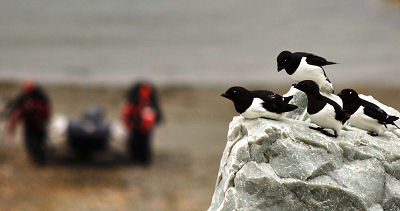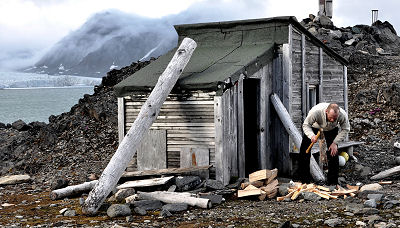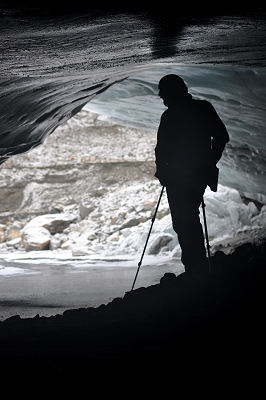|
Strona archiwalna!
Ta strona zawiera treści archiwalne, które nie były zmieniane po 23 września 2019 r. Jeśli chcesz wiedzieć więcej zapoznaj się z deklaracją dostępności
|
||||||
archiwum
 2006 2006
 2008 2008
 2010 2010
 2012 2012
 2014 2014 |
||||||

| ||||||
 |
 |
|||||

|
||||||
| strona główna założenia regulamin kalendarium wskazówki pobierz jury rejestracja zgłoszone projekty galeria gallery | archiwum kontakt | |||||
Description popularizing the research project Metaphorically speaking we can say that a glacier is breathing. Yet the metaphor does not communicate the fact the huge masses of ice alternately advance and retreat, as if they were a colossal chest. And even if it did, due to processes of glacier melting, there would be more inhales. And it should not be associated with various life forms in glacial habitats. The metaphor is quite literal, as it refers to the flows of oxygen and carbon dioxide, which are inextricably linked with dynamics of the phenomena occurring in subpolar masses of ice. Abstract The significance of glacier systems in the circulation of chemical elements in the natural environment is not fully understood yet. One particularly important part of this cycle is the quantity of atmospheric CO2 consumed by glacial areas. CO2 is believed to be the primary agent of global warming today. Another important problem is determination of the impact of atmospheric O2 on the intensification of chemical processes. The identification of the source of the primary products of the chemical processes taking place in glaciers is an important goal in terms of long term climate changes. Aluminosilicate and silicate dissolution processes are linked with long term (up to 100 million years) binding atmospheric CO2 in marine deposits, while carbonate dissolution binds CO2 for several years at most. It should be noted that glacial research is important on a global scale, as ice covers 10% of the Earth's surface. The purpose of the research was to qualitatively and quantitatively identify differences in principal chemical processes as well as their dependence on climate changes. The researches were performed around the Werenskiold Glacier in the High Arctic. The research aims were to accomplish the following specific goals: 1) a comparative analysis of oxidation processes, carbonation processes, and hydrolysis during a glacier's melting phase, 2) estimation of the extent of dissolution of silicate, aluminosilicate, and carbonate. The aforesaid goals were accomplished by producing a geochemical model using PHREEQC software. Field work included collecting water samples during ablation and winter season in Werenskiold Glacier and measuring physico-chemical indicators of water quality (i.e. temperature, electrolytic conductivity etc.). Laboratory work included the analyses of chemical composition of the water samples. Basing on the data, a geochemical model was prepared with PHREEQC software. The project's main result was creating an advanced model for chemical processes occurring in a glacier and taking into account the factors that intensify the aforesaid processes. The model will be used in comparing quantity of consumed atmospheric CO2 and the effects of O2 on chemical processes taking place in glaciers. Another important outcome of the project was identification of the source of the products of chemical processes.
|
|
|||||















